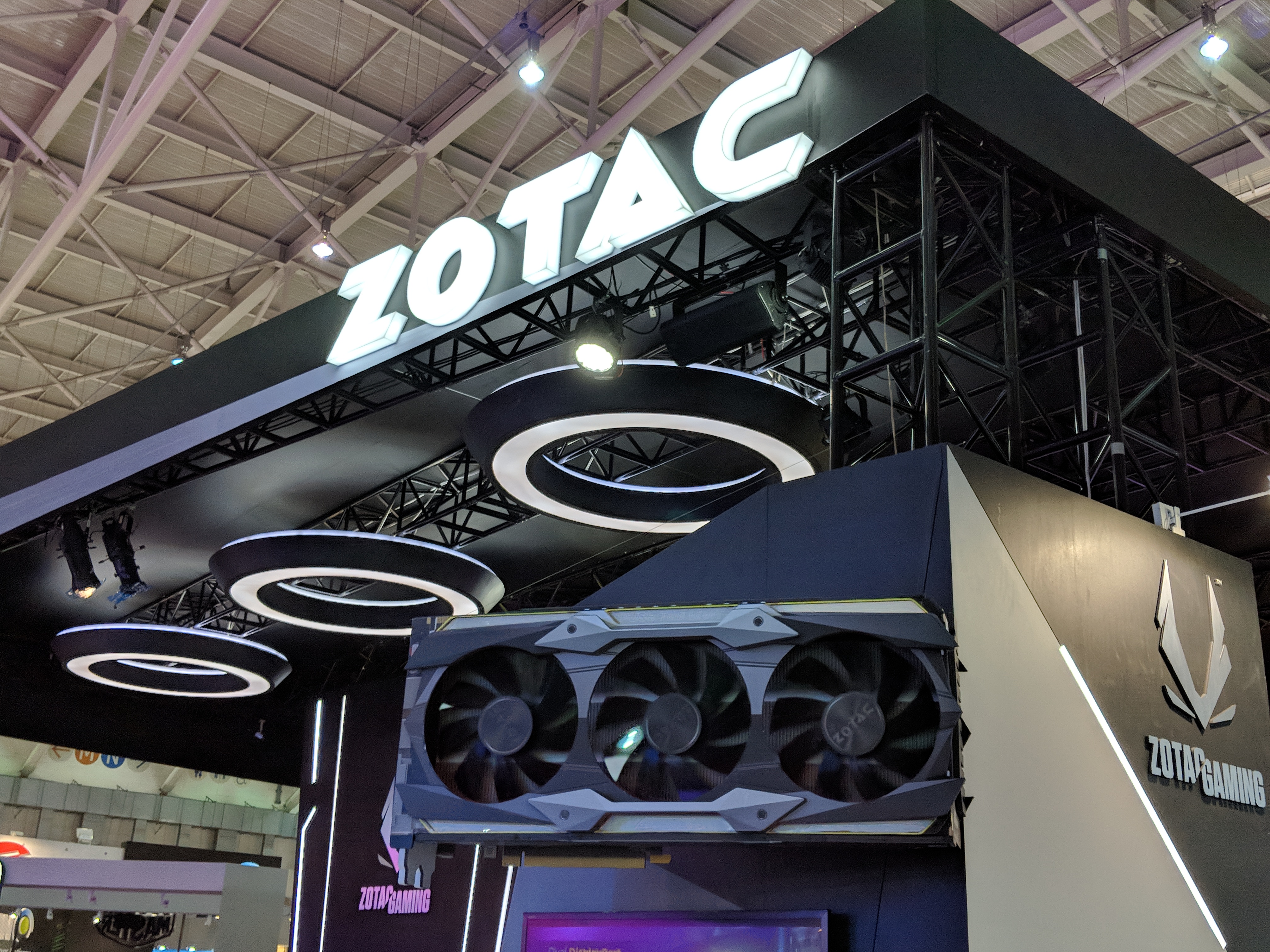Zotac Brings New Compac PCs, VR Backpack to Computex 2018
Zotac revealed the full specifications for several of its recently teased products at Computex 2018. While knew most of these products were coming, it's always good to get some hands-on time with Zotac's hardware, and gather up some of those important missing details.
Zbox Cornicopia
Zotac had a laundry list of new Zbox-branded products at the show, including the Zbox CI660, a passively cooled mini PC that features an Intel Core i7-8550U processor with UHD Graphics 620. The company will release barebones models that ship sans memory and storage, but there are two SODIMM slots and a 2.5" drive bay for SATA 6GB/s devices. However, Zotac will also ship models with a 16GB (2 x 8GB) kit of DDR4 memory and a 240GB SSD, in addition to another model with all that and Windows 10 installed. Although it comes with a 65W AC adapter, the CI660 should sip power with its 25W CPU.
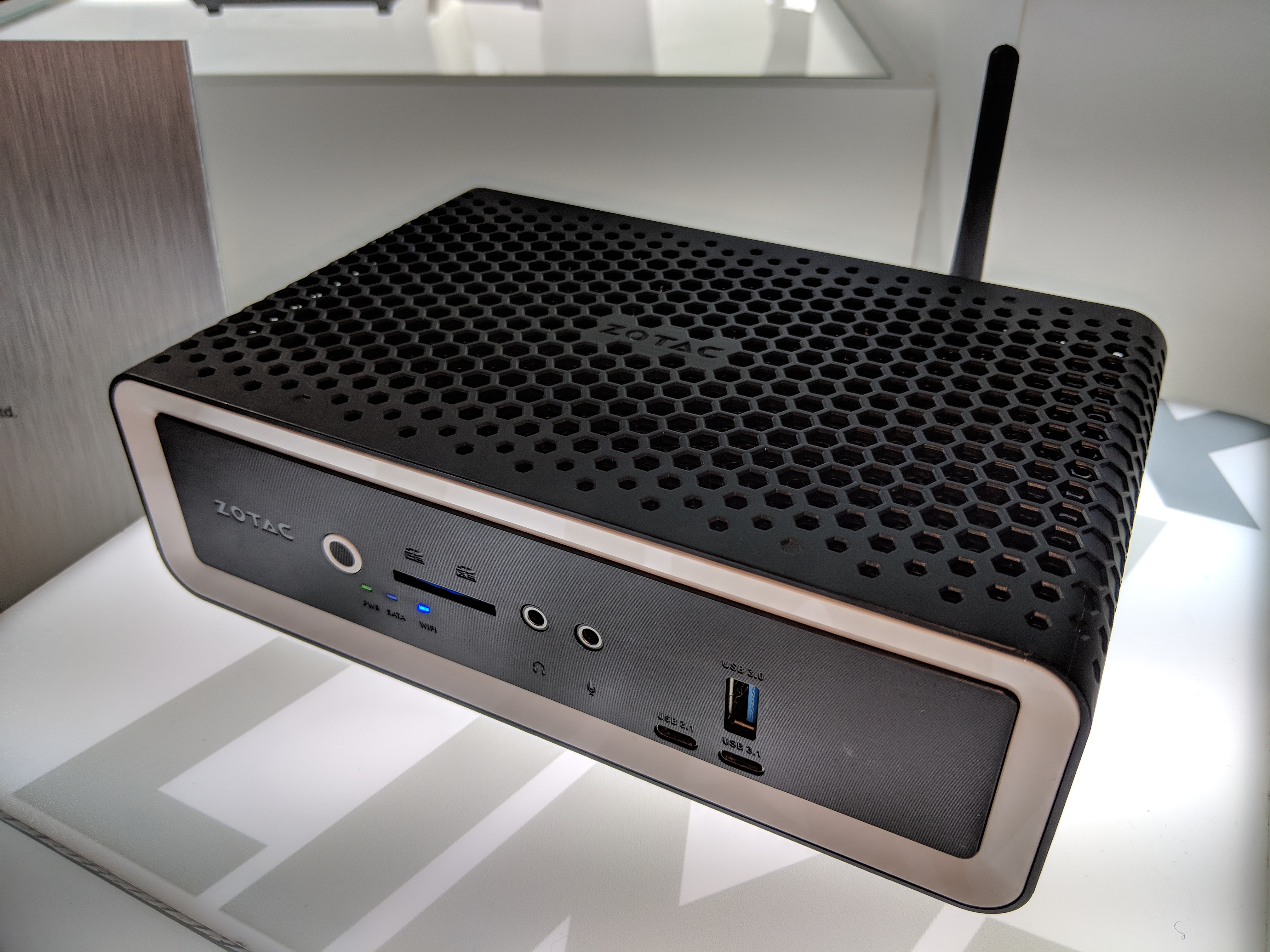
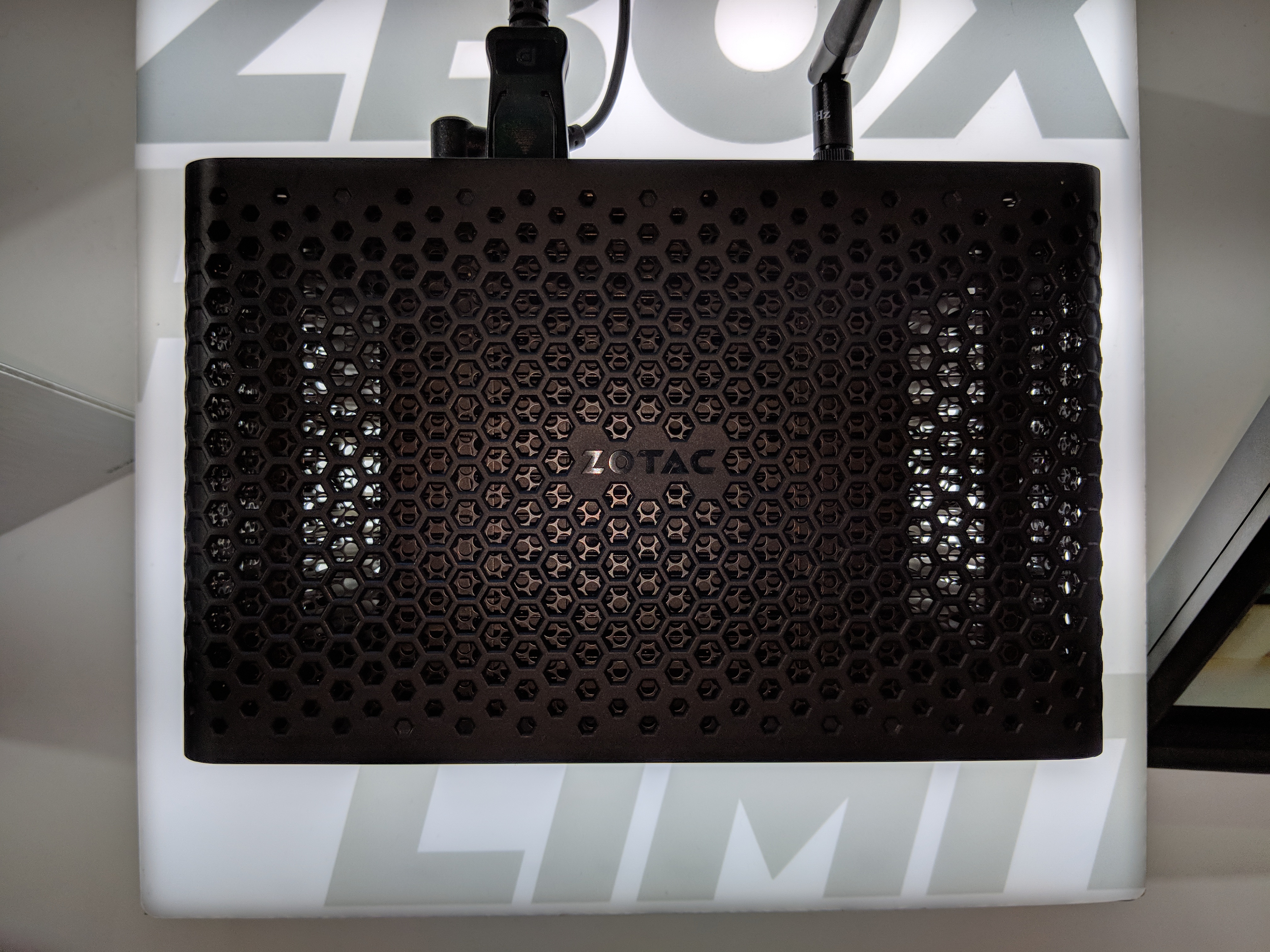
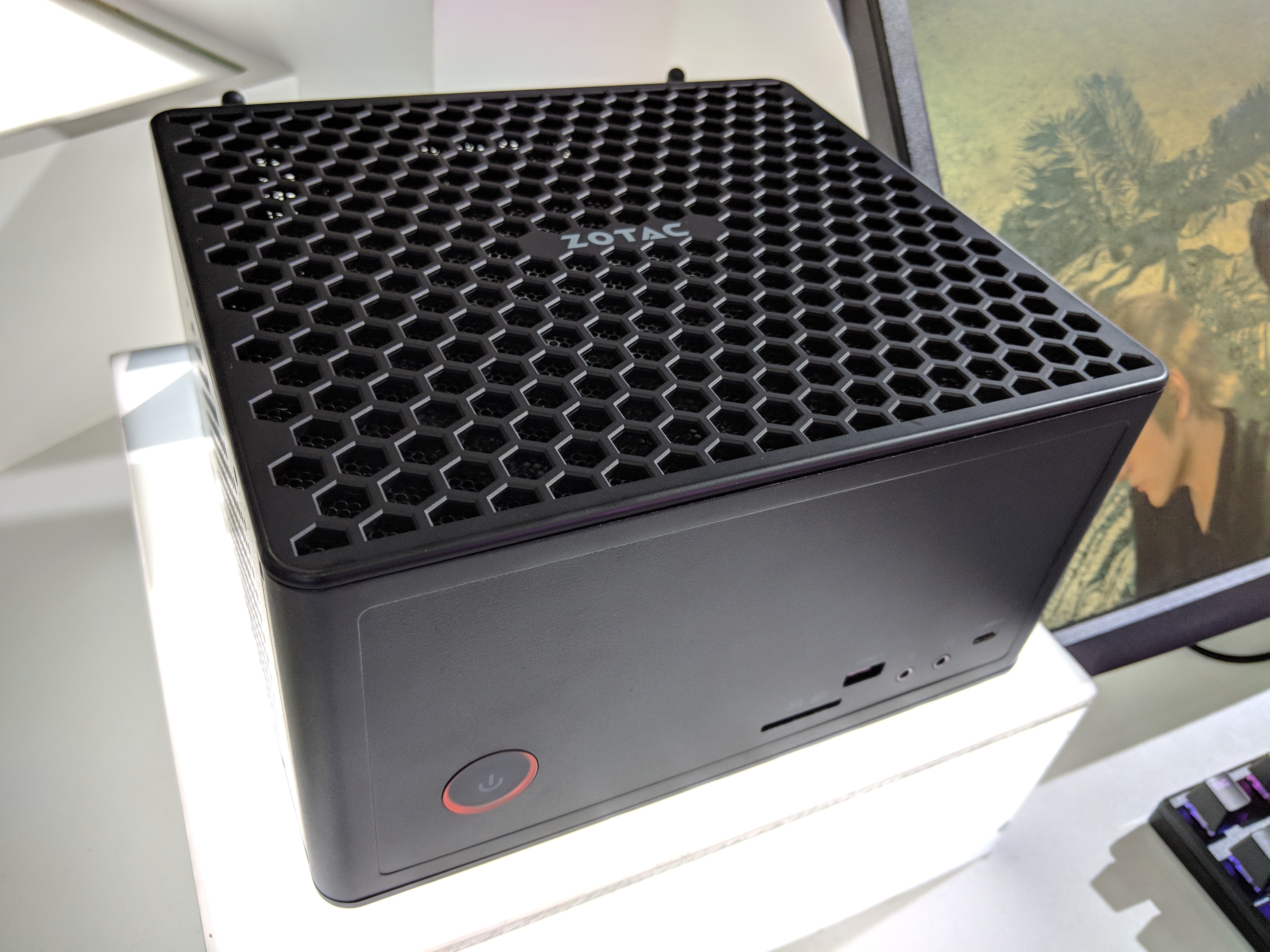
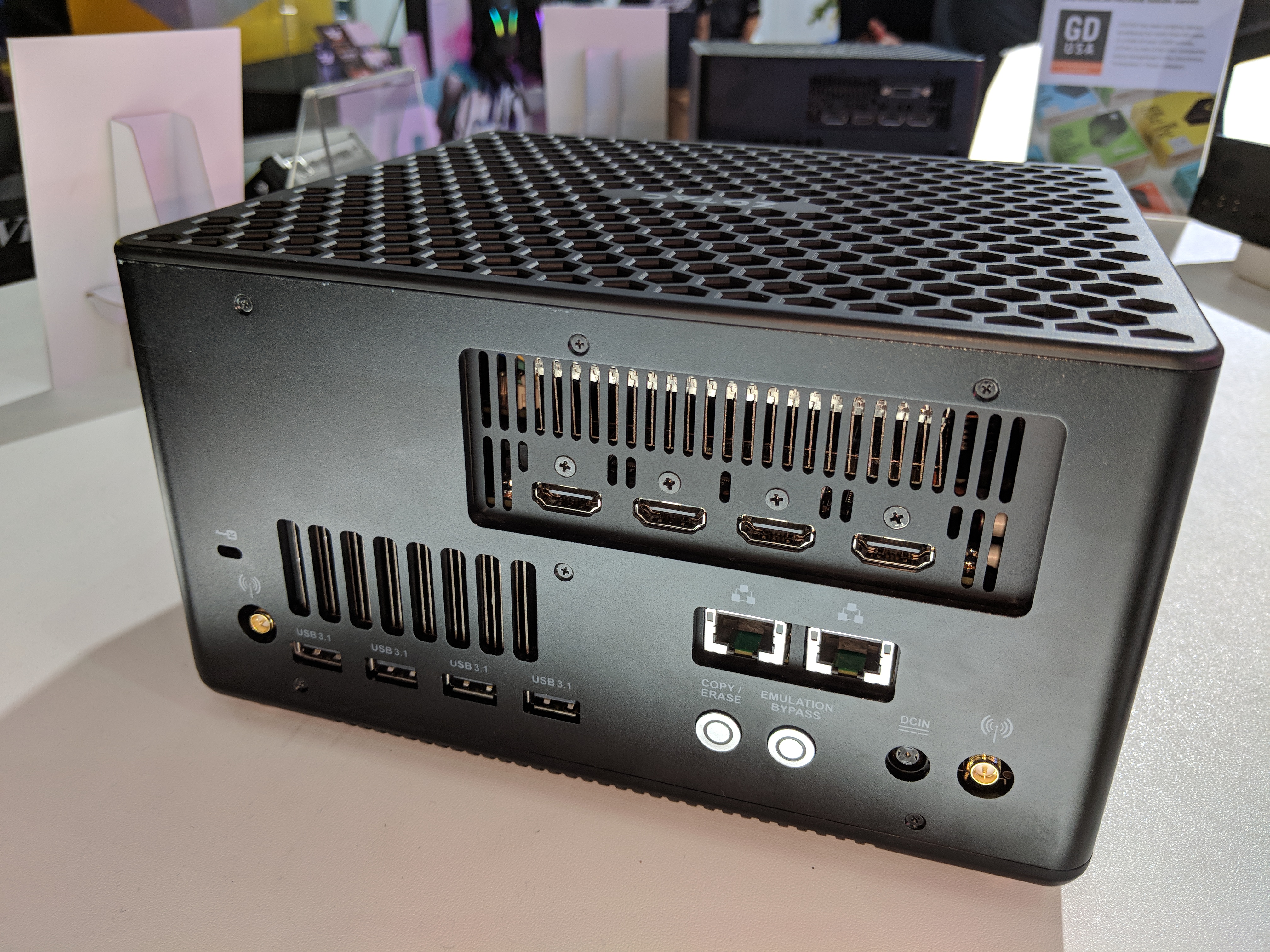
Shifting to gaming, the company showcased several new Magnus-branded Zbox mini PCs, including one that features Killer networking components for the first time. The new Magnus Gaming mini PC sports an 8th generation Intel Core i7-8700T processor and GeForce GTX 1080 graphics. Similar to other Zbox PCs, it will ship as a barebones unit, with components, and with Windows 10 installed. The Magnus Gaming sports two SODIMM slots that supports up to 32GB (2 x 16GB) of DDR4-2666 memory, in addition to an M.2 2280 slot that supports Intel Optane memory or SATA and PCIe x4 SSDs. There's also a 2.5" SATA drive bay, and of course, Killer Double Shot Pro (gigabit LAN & 802.11ac WiFi with Bluetooth 5.0) networking.
Zotac also showcased a new Zbox designed for professionals. The Zbox Q series is nearly identical to the Zbox Magnus Gaming mini PCs, with an Intel Core i7-8700T processor, up to 32GB (2 x 16GB) of DDR4-2666 memory, an M.2 2280 slot with support for Intel Optane memory or SATA and PCIe x4 SSDs, and a 2.5" SATA drive bay. However, unlike its gaming brethren, the Q series features an Nvidia Quadro P5000 graphics card with 16GB of GDDR5 memory and dual 10-gigabit LAN ports.
More Mek Madness
Zotac's desktop PC lineup also grew at the show, with two new Mek PCs. The Mek Mini features an Intel Core i7-8700T processor in a mini-ITX motherboard, GeForce GTX 1080 graphics, 16GB (2 x 8GB) of DDR4-2666 memory, a 2TB 2.5" HDD with 32GB of Intel Optane memory, in addition to an extra M.2 2280 slot for PCIe x4 or SATA SSDs. The tiny chassis also sports two USB 3.1 and four USB 3.0 ports, gigabit Ethernet, 802.11ac Wifi, and a 330W AC adapter.
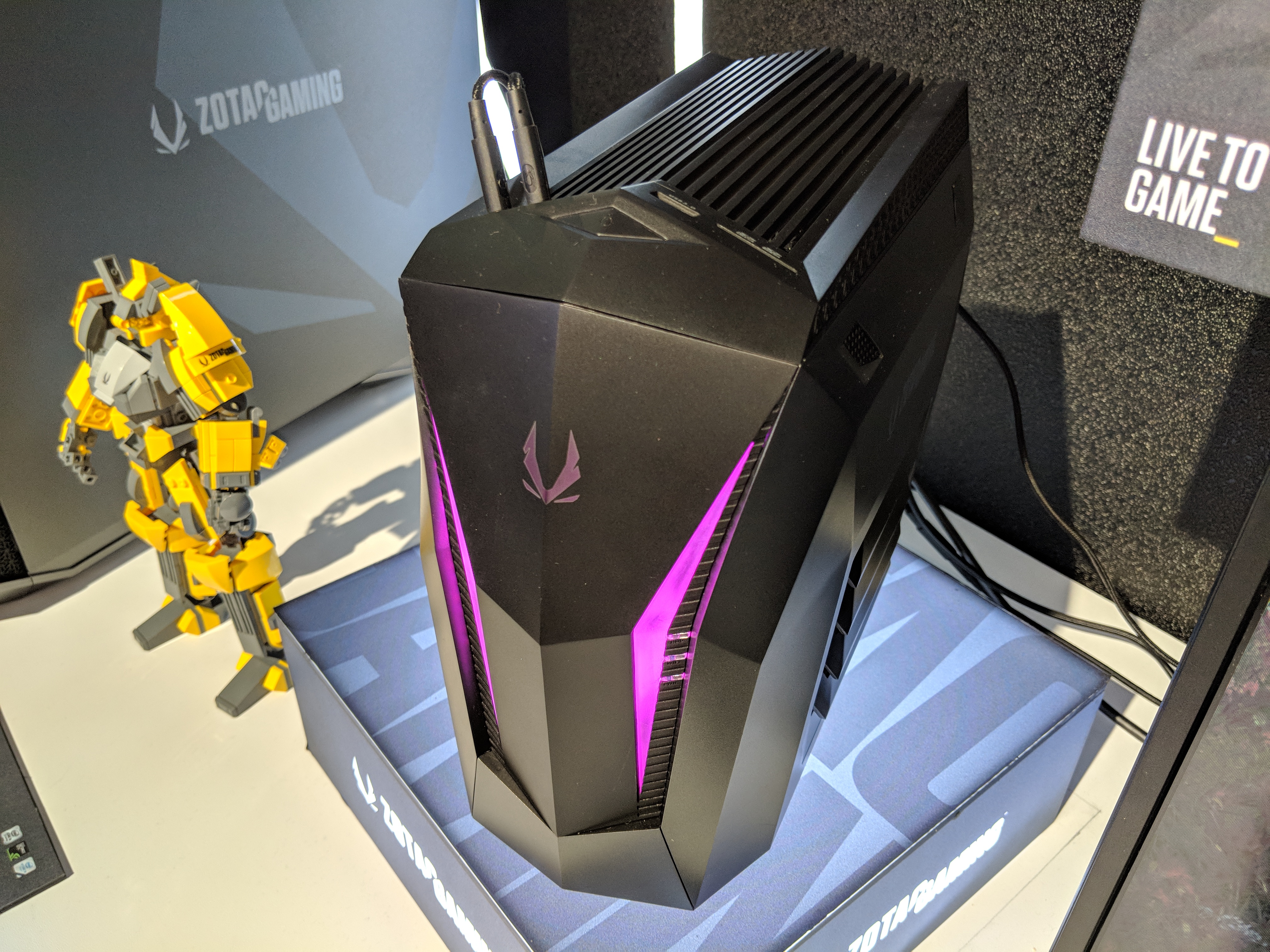
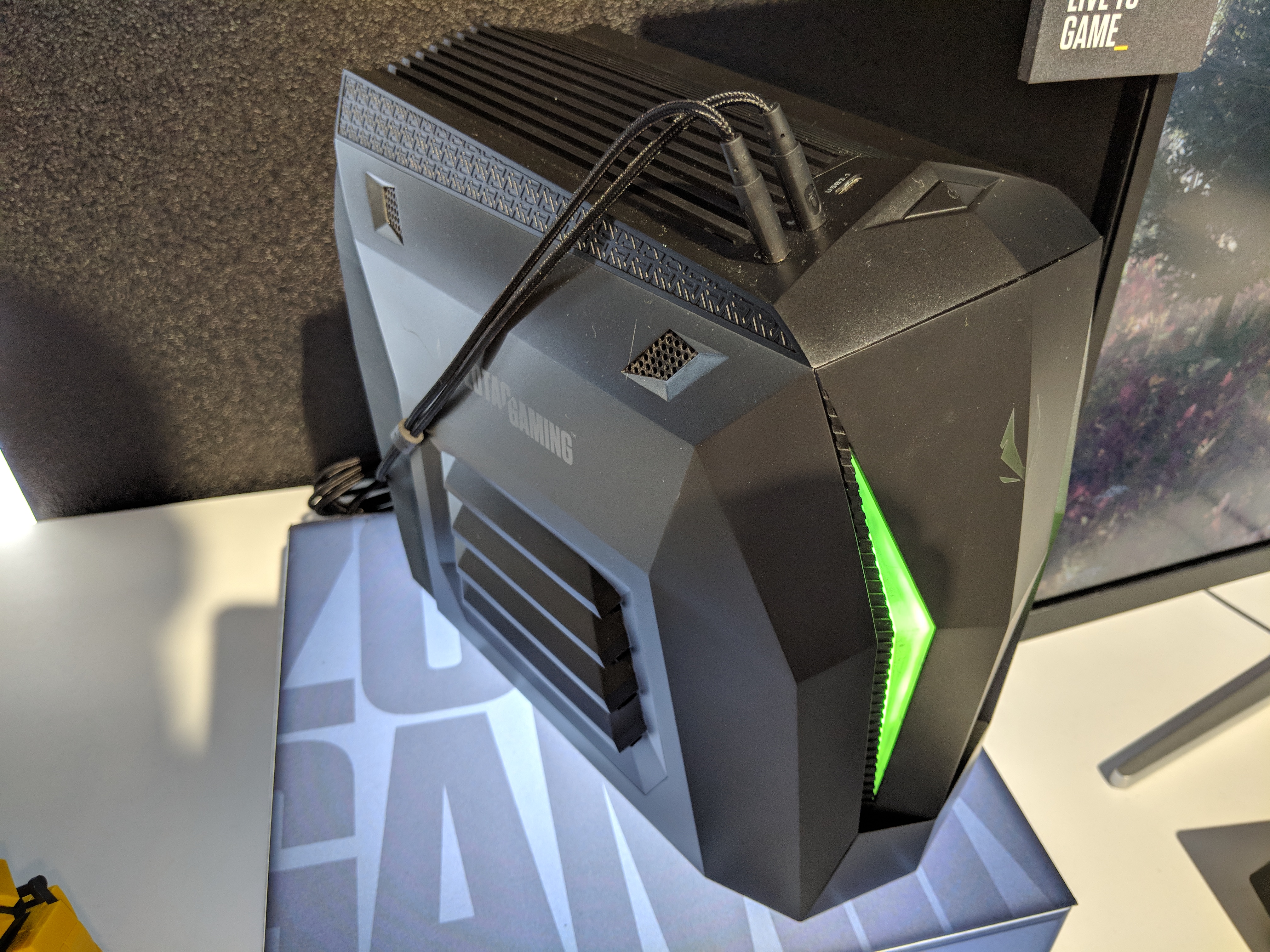
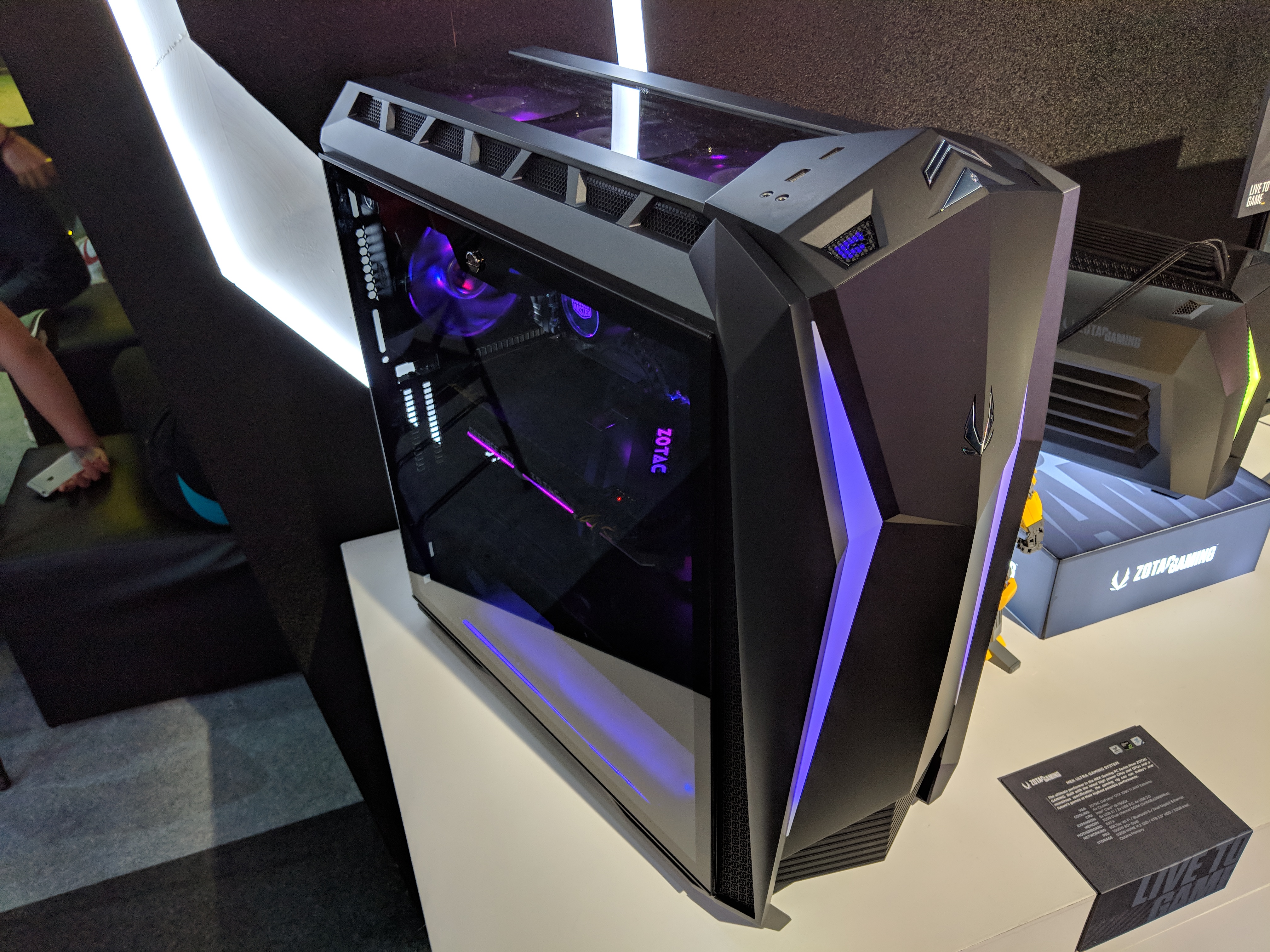
The Mek Ultra pushes performance (and size) to the limit with a large ATX case that houses an Intel Core i9-7900X processor on an E-ATX motherboard, 32GB (2 x 16GB) of DDR4-2666 memory, and a Zotac GeForce GTX 1080 Ti AMP Extreme graphics card. For storage, there's a 512GB PCIe NVMe M.2 SSD and a 4TB 3.5" HDD with 32GB of Intel Optane memory. Dual gigabit Ethernet and 802.11ac WiFi come standard with the Mek series, and the Ultra's 1000W 80 Plus Gold-certified power supply is more than enough for the components inside, plus room to expand to an SLI graphics setup down the line.
VR Go 2.0
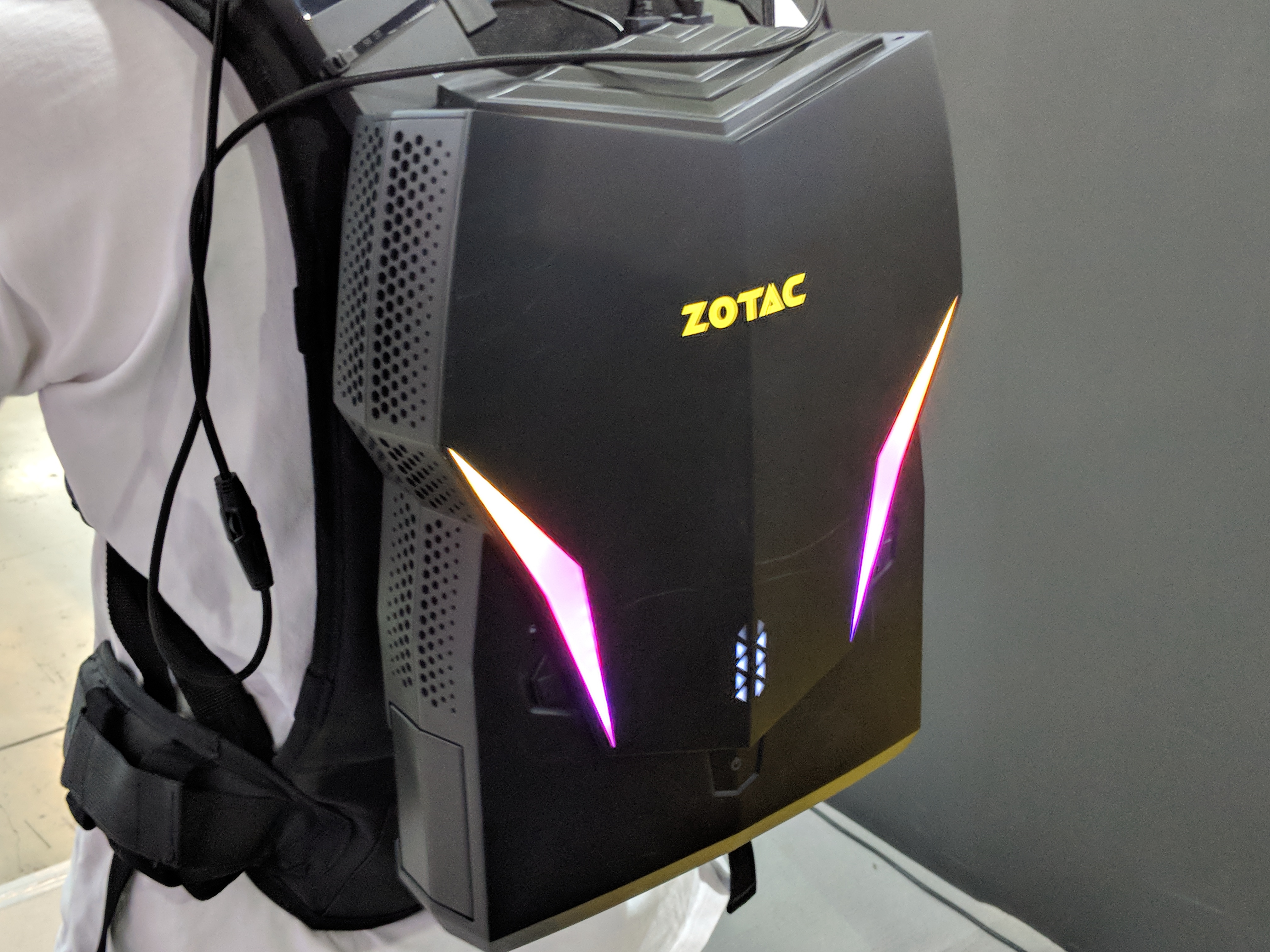
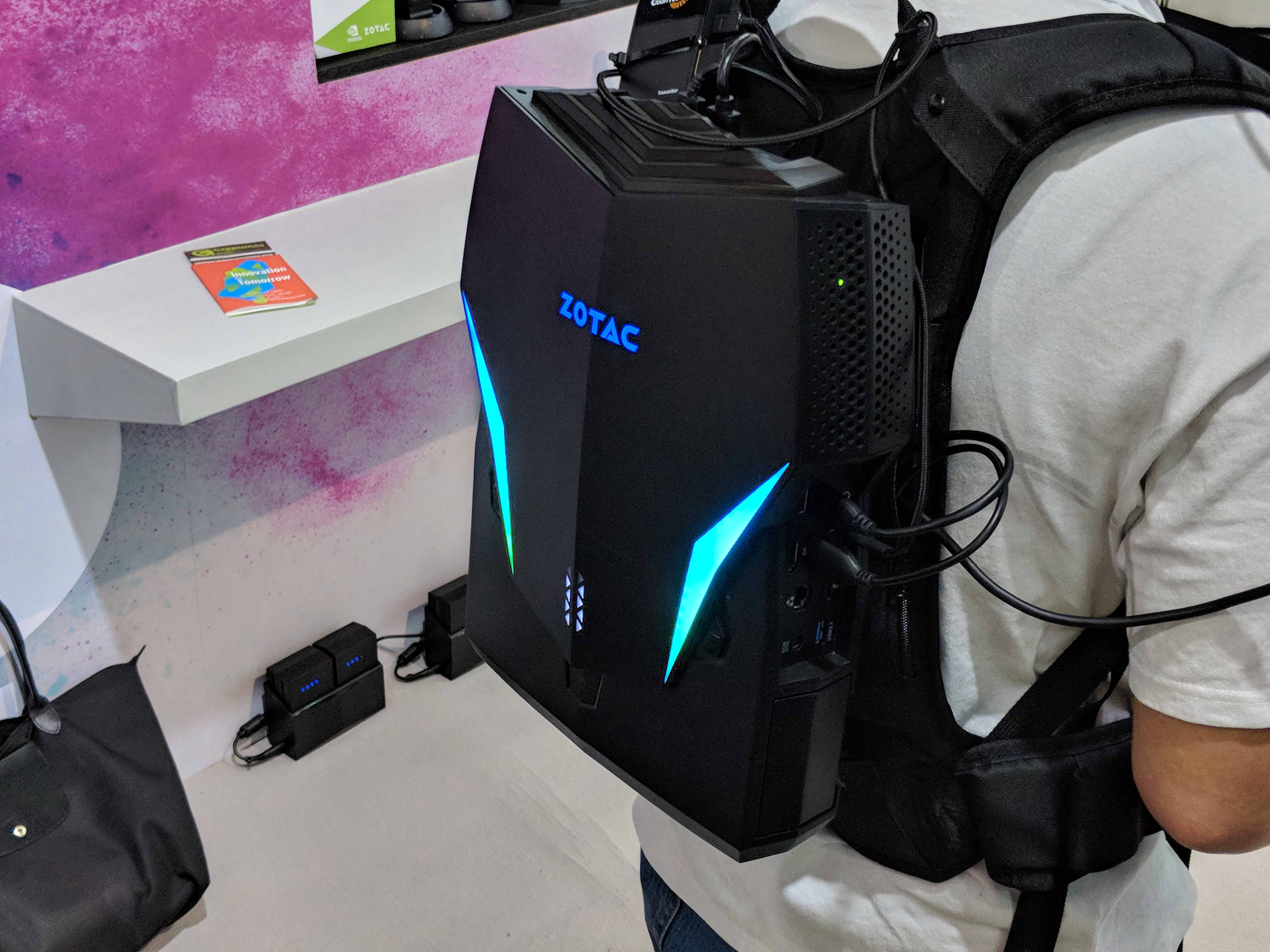
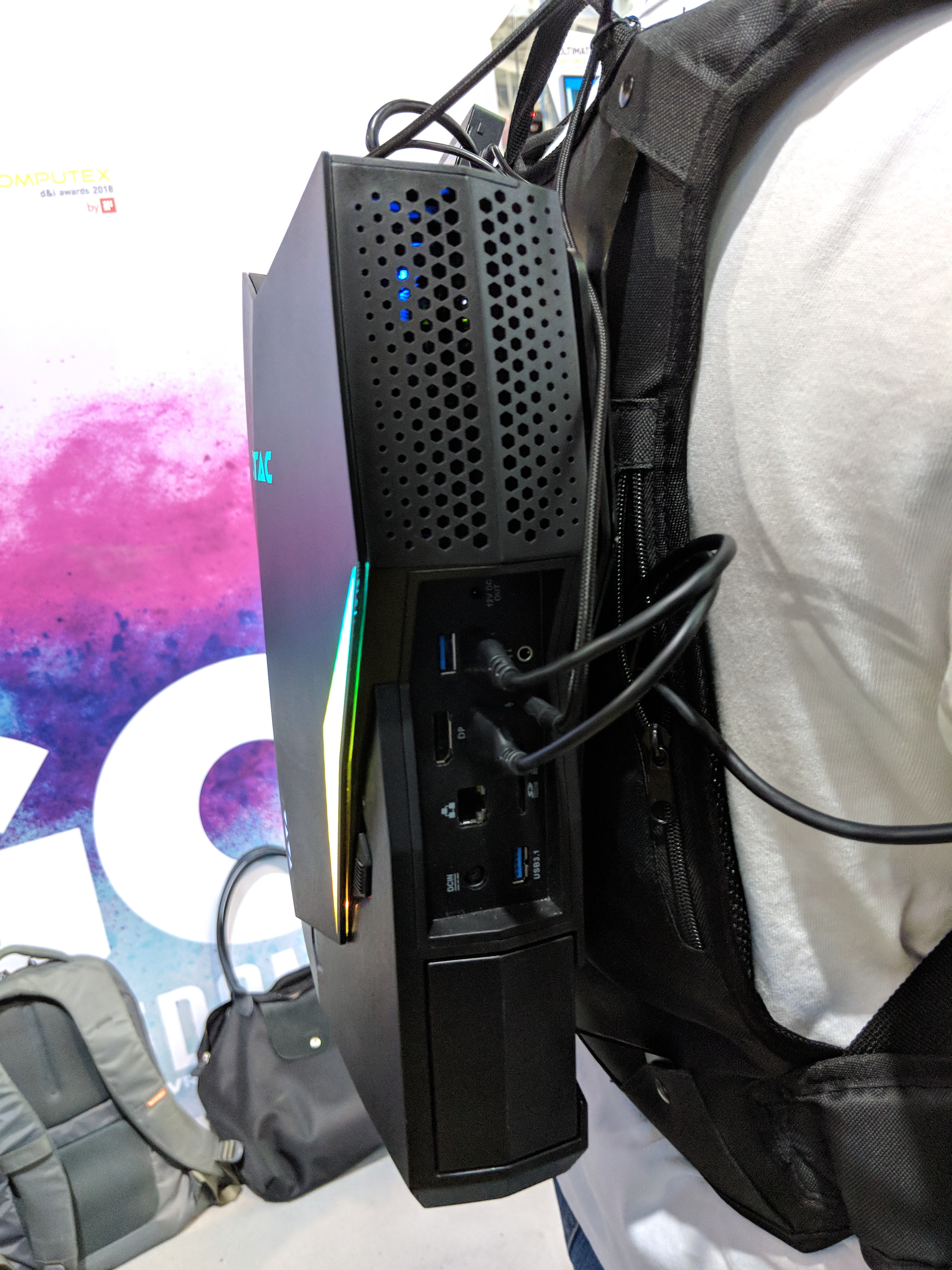
The Zotac VR Go backpack PC got some serious upgrades here, with the new VR Go 2.0 sporting a redesigned chassis that's smaller and lighter, and an 8th generation Intel Core i7-8700T processor (which seems to be a favorite of Zotac's). It still features GeForce GTX 1070 graphics, a 240GB M.2 SATA SSD, and 16GB (2 x 8GB) of DDR4 memory. But the newer model also has two slightly smaller (compared to the previous iteration) 86.4WH li-ion batteries. This reduces the untethered battery life by about 30 minutes compared to the original (the first model was rated for two hours; Go 2.0 is rated for 1.5 hours). Although VR gaming is still a niche market (and VR backpack PCs a niche within that niche), it's encouraging to see Zotac continue to pursue this particular gaming arena.
Get Tom's Hardware's best news and in-depth reviews, straight to your inbox.
Derek Forrest was a contributing freelance writer for Tom's Hardware. He covered hardware news and reviews, focusing on gaming desktops and laptops.
